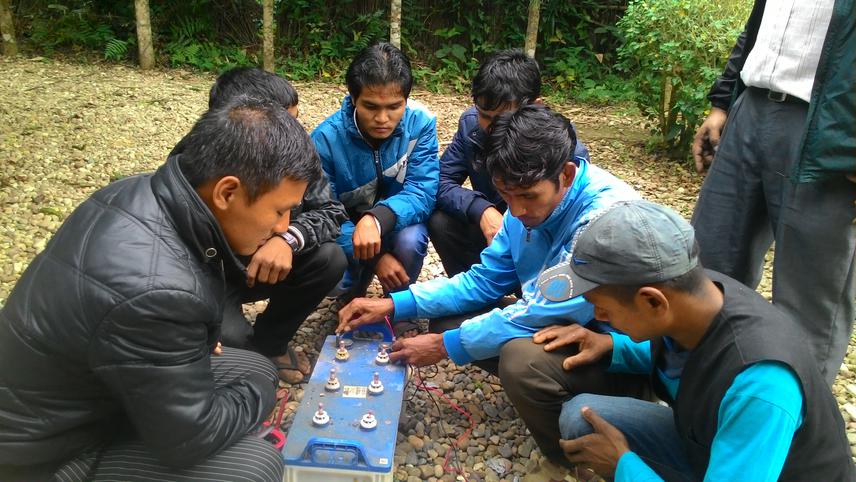Babu Bhattarai
Other projects
11 Nov 2010
Community Outreach Programmes to Lessen Human-Tiger Conflict in Bardia National Park
31 Jan 2017
Conflict and Conservation: Sharing the Costs and Benefits of Tiger (Panthera tigris tigris) Conservation in Communities Adjacent to Wildlife Reserves in Nepal
This project will investigate the extent and impact of hunting in Bardia National Park in Nepal, where large carnivores are affected by illegal hunting of their prey species.

Solar maintenance practical.
The north-eastern section of Bardia National Park (Babai valley and surrounding area) is rich in biodiversity. It provides a mosaic of habitat for many large carnivores such as Tiger, Leopard, Wolf and Hyena; and smaller carnivores such as Jungle Cat, Fishing Cat, Otter, Fox and Jackal. Prey species for these carnivores include Sambar, Goral, Barking Deer, Langur, Rhesus, Wild Boar, Pangolin and Porcupine. The study area is located away from park headquarters and is remote; lacking access by motor-able road. Park protection monitoring is less frequent in this area and poachers take advantage of these weaknesses. Due to remoteness there are no job opportunities and the unemployment rate is high. Some youths migrate seasonally to nearby cities such as Birendranagar and Nepalgunj and even as far as India in search of jobs. Subsistence farming is the mainstay of local communities and crop raiding by park animals has serious effects on the livelihood of the communities.
There is clear evidence that hunting is present in the park. Members of the research team have observed many meat-drying huts along the Babai river (in 2005). Park personnel have also reported further evidence of hunting in recent years. Hunting of prey species is a major concern and has been a common practice in the area since before the park was established. Hunting of prey species creates competition with predators, thus it has a negative effect on the conservation of carnivores.
This project will assess the extent and impact of hunting of prey species by local hunters in Bardia National Park. We will document: which groups within the community are involved in hunting; which animal species are hunted; how often hunting occurs; how many animals are killed (and whether this varies, for example with season); how animals or animal parts are used or sold; where animal parts are raided; and what values (economic and traditional) are associated with wild animal products. We will also establish whether and why wild meat is preferred over domestic meat. This project also has component of community outreach aiming to reduce hunting by providing skill development training to enable local people to earn cash for their livelihood and to produce domestic meat to fulfill local needs. Therefore, this project is likely to have significant implications for carnivore conservation in the region.